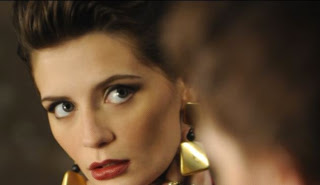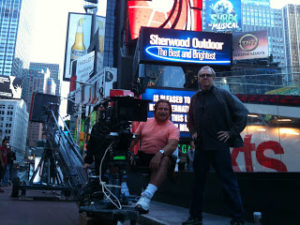September 28, 2009
Though it happens in this business all the time, it’s still a shock when a television show is canceled unexpectedly. The economics that drive the decision-making don’t take into account the hard work of hundreds of people, the disruption to the lives of all those involved, and the disappointment of not getting to see the work through to completion.
I spent most of last week working on my director’s cut of the fifth episode of a new CW series THE BEAUTIFUL LIFE. The show was a joy to direct–a wonderful cast and crew–and I was pleased with the way it came together. Thus it was a blow to find out on Friday afternoon that the show had been canceled and that no further episodes would be aired. This had never happened to me before–to have worked so hard on something that remains unfinished. It pains me because there was so much about the project that inspired me.
But most of all, I’m devastated for all of the people who worked full-time on the show. I’m fortunate in that I get to move onto another show right away, but most of the people on the crew will now be scrambling for jobs. I hope they each land something quickly and I get to work with everyone of them again soon.
The show was about young models living in New York. Just before shooting I saw a terrific documentary called THE SEPTEMBER ISSUE, about the creation of a single issue of Vogue. I so enjoyed the movie that I ran out to a newsstand and bought the magazine. The attention to detail, in all of the magazine’s photo shoots, makes me realize, yet again, how important it is to give every image the care and attention it deserves. Hard to do in television sometimes, but rewarding when one is able to pull it off.
I often tell my students that the positioning of characters in the frame creates as much emotion for the audience as an actor’s performance choice. The hard work of film directing is finding a way to get a specific image while, at the same time, making the actor feel comfortable enough in the space, such that he is able to give an authentic performance. I often have actors say to me, “…but what you’re asking me to do feels odd to me.” My approach to directing is not to resist–because above all I want the actor to feel free to do their best work–but I will often try to explain the visual effect I am going for. If I can get the actor to trust me, and to find a way to work with the needs of the camera in mind, then the result can be breathtaking.
For example, in this frame: Mischa Barton had to bring her body and face around to an unnatural angle, in order for the camera to be able to hold her face in profile while she delivered a very emotional speech. But the effect of seeing the two actors in one shot, separated by the space between them, with Ed Quinn (who is huge) smaller in the frame, was worth the effort. The image itself speaks of the characters’ alienation from one another. In my mind, this is a much more effective way of visually telling the story, rather than simply relying upon the huge close shots which you so often see on television shows. Because once you cut to a close shot, there is nowhere else to go emotionally. So I try to save those, and use them sparingly, to maximize their impact.
The photo above is a good example: Sara Paxton and Nico Tortorella have a romance that proceeds gradually in the episode, and then builds to this moment. I was inspired by the close shots between Elizabeth Taylor and Montgomery Clift in A PLACE IN THE SUN, but the impact of shots this large would be diluted if one went to them too soon.
I’ve never been a fan of the standard complementary coverage that so many directors favor. It certainly works in some places, but like everything else, it should be used specifically and deliberately, not by default. I always like to weight the scene towards one actor or another, to make you feel more emotion by the very size of the frame that holds them.
Also, theoretically, an actor can have a totally neutral expression on his face, and if you then do a slow dolly into that actor, you can make the audience feel that something is happening to him emotionally, purely by the motion of the camera and what you hold in the frame.
The best of all possible worlds is when you have actors who trust you, who deliver emotionally rich performances, and can accommodate themselves to the filmmaking process–as every one of the actors did on this particular show. It’s one of the things that makes me so sad about its cancellation because I was looking forward to working with them again.
In particular, Mischa Barton is a joy to work with, and her eyes are so expressive–she reminds me of a silent film actress. I also feel great sentimental attachment to her as she was one of the first people I worked with when I started directing on THE O.C.
Here are some other stills from this wonderful, unfinished story.
Addendum: The episode eventually aired on YouTube at this link:


Leave a Comment